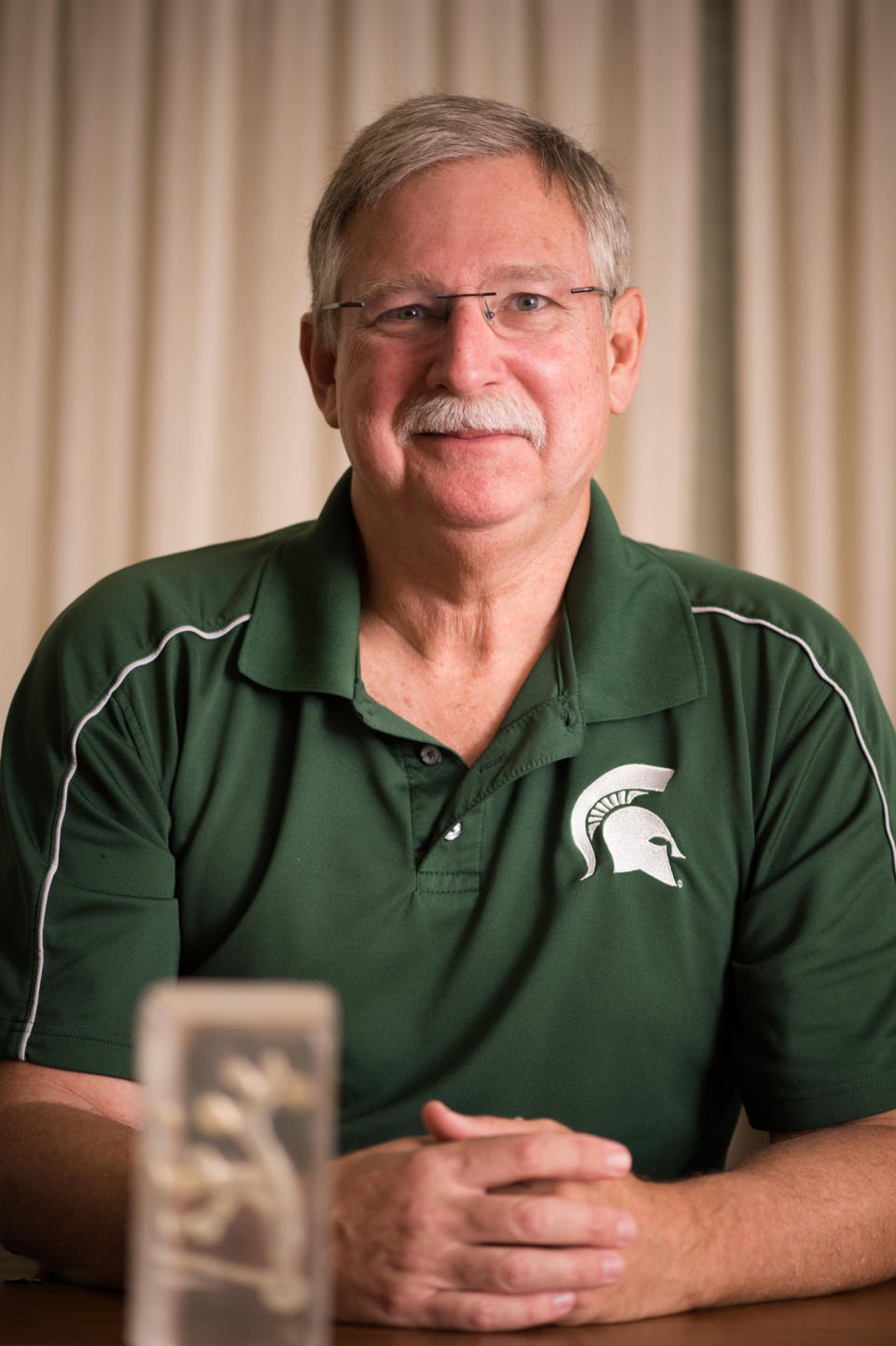Here’s Why Kidney Stone Sufferers Should Ride Big Thunder Mountain Railroad

This is the strangest cure we’ve ever heard of. (Photo: Getty Images)
A Michigan State University urologist has some advice for people who struggle with kidney stones: Hop on a roller coaster.
David Wartinger, D.O., a professor emeritus in the Department of Osteopathic Surgical Specialties, conducted a study and discovered that riding a roller coaster helps people pass kidney stones nearly 70 percent of the time (the results are published in the Journal of the American Osteopathic Association). How did he find a link? He took a fake kidney on thrill rides — seriously.
First, a kidney-stone primer: According to the Mayo Clinic, kidney stones form when your urine contains more crystal-forming substances such as calcium, oxalate, and uric acid, than the fluid in your urine can dilute. The crystals can end up sticking together, creating kidney stones. People with certain medical conditions like hyperparathyroidism or a family history of kidney stones are at risk of forming them, but even being regularly dehydrated can cause them to form. And patients say the process of passing them — i.e. when they work their way through your kidney to get out of your body — is excruciating. “Passing a kidney stone is like giving birth to a porcupine,” Wartinger says.
Wartinger didn’t just randomly come up with the roller-coaster idea: He says he decided to test the theory after hearing from several patients that they had passed kidney stones while riding roller coasters. “I live in East Lansing, Mich., and this place is a ghost town in the spring — half of the population goes to Orlando for spring break,” he tells Yahoo Beauty. “My patients would come back and tell me that they had passed kidney stones while they were in Orlando.” Wartinger started to notice a trend, but didn’t think it was really legitimate until one patient told him he went on a roller coaster, passed a stone, went on again, and passed three stones in a row.

Dave Wartinger, associate professor of osteopathic surgical specialties, poses with a silicon cast of the inside of a kidney. (Photo: G.L. Kohuth, Michigan State University)
“At that point, I said, ‘Patients aren’t just thinking this is happening — this is real,’” he says. “We had to invent a model to test this, because we didn’t think anyone would believe us.”
Wartinger and his study co-author created a synthetic 3D model of a hollow kidney, filled it with urine and three kidney stones, traveled to Orlando, and took it on Big Thunder Mountain Railroad (a popular ride with his kidney-stone-passing patients) 20 times. Since he figured that two adult men riding the same ride repeatedly with a backpack would raise suspicion, he and his colleague went to guest services first, where they explained what they were trying to do. They got a little help from a manager who turned out to have suffered from a stone himself. “He called the ride before we got over, and said, ‘Whatever they want, you cooperate with them,’” Wartinger says.
So, Wartinger and his colleague took their fake kidney on the ride, and discovered that it passed a stone the majority of the time. However, not all seats were created equal: Wartinger found that they had the best luck when they sat at the back of the ride.
He explains why this works: The inside of your kidney looks like the branches and trunk of a tree. Kidney stones form near the rim, where the “branches” and “leaves” would be, and have to work through a maze to get to your bladder. The vibrations and force from certain types of roller coasters help vibrate the stones through your kidney’s inner maze and out to your bladder. Sitting in the back is particularly helpful, because those seats tend to be subjected to the most force and be the bumpiest.
Not all roller coasters are created equal, though: Wartinger says Big Thunder Mountain Railroad is likely good because it’s fast and rough, which can help vibrate a stone loose. But rides that would go too fast or upside down might actually create a centrifugal force that pins the stone in place and might prevent it from passing. And, since the inside of each person’s kidney is different, the twists and turns that help one patient pass a stone may not work for another person. You have to find the roller coaster that works best for you.
People who have had a stone in the past have a 50 percent chance of getting another within 10 years, Wartinger says, but it’s possible to pass them before they become large, and therefore more painful. For that reason, Wartinger recommends kidney-stone sufferers take a spin on a roller coaster regularly.
So far, he’s only been able to test his theory at Disney World (other amusement parks either didn’t get the concept or thought the idea was too weird to cooperate), but he’s been able to at least prove that there’s an association. Wartinger hopes to get more cooperation from other amusement parks in the future to further validate his theory.
Since current methods for passing stones of under 4 millimeters typically involve drinking plenty of liquids, OTC pain relievers, and a lot of just having to deal with the pain, Wartinger is hopeful that his method will help a lot of people. “If we can prove that we’re right — and I’m sure we are — then we have a much more fun way of getting rid of kidney stones,” he says.
Let’s keep in touch! Follow Yahoo Beauty on Facebook, Twitter, Instagram, and Pinterest.

